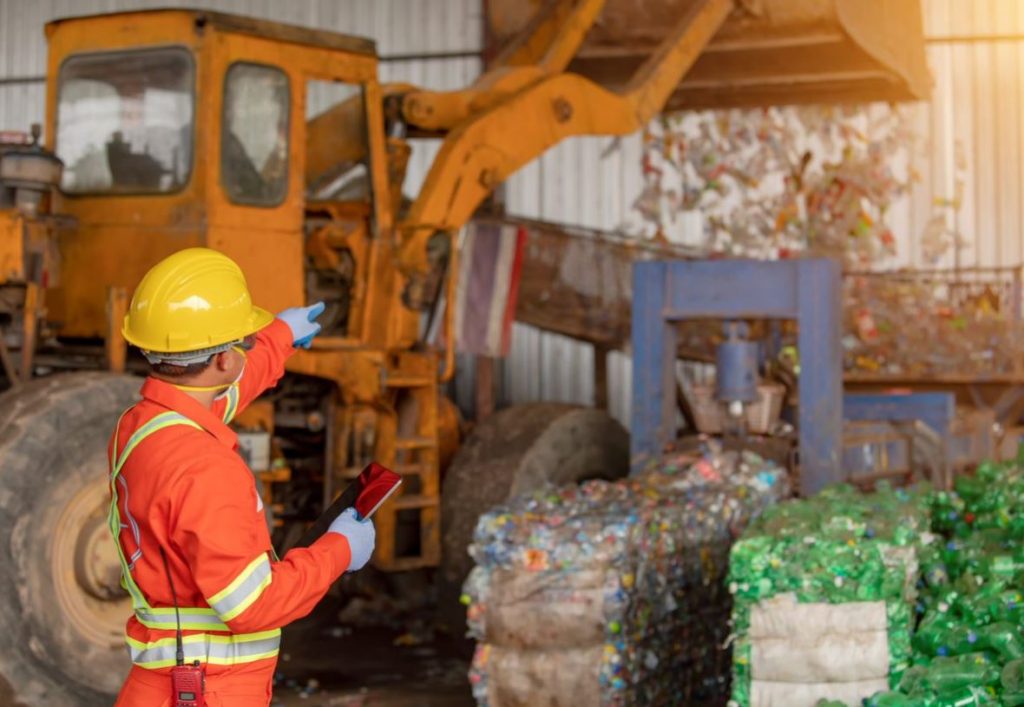
Whether it is to reduce the amount of waste, to protect the environment and behave responsibly, to comply with the law or to improve economic performance, waste monitoring in companies is essential. But how do you set up and ensure good waste management in a company?
Waste management in companies: what are the current regulations?
According to Directive 2008/98/EC of the European Parliament and of the Council of 19 November 2008, “any substance or object which the holder discards or intends or is required to discard” is considered waste.
This legislation classifies waste according to a hierarchy (prevention, reuse, recycling, recovery for other purposes, waste disposal) which provides a basis on which companies can build their waste management policy.
They must therefore undertake to manage their waste “without risk to water, air, soil, plants or animals; without causing a nuisance through noise or odours; and without adversely affecting the countryside or places of special interest”. It involves all sectors (restaurants, private offices, construction sites, public institutions, shops, etc.).
The Directive also requires companies to “treat [their waste] themselves or have it handled by an officially recognised operator”. It is also the responsibility of companies to sort the waste they generate according to its type.
Whether they carry out the processing themselves or delegate this task to a service provider, the materials should be processed in the appropriate system and the tracking of shipments should be recorded.
These measures apply both to waste from employees’ activities and to waste generated on site during production.
How should waste management be organised in companies?
The waste monitoring chain is made up of two links: internal and external management.
5 steps to effective waste management
Implementing an optimal approach to waste management in a business can be achieved in 5 phases.
1 – Taking stock of the situation
When taking stock of the situation, a number of questions need to be asked about the waste generated by the company:
● How much waste is produced?
● What kind of waste is it?
● Is it recyclable? Reusable? Dangerous?
● Can it be reduced?
Clarisse Chang, Senior CSR Analyst at EcoVadis[1], explains: “It may be useful to benchmark yourself against other companies in your sector to identify your relative performance and refine your objectives.”
Once the situation has been analysed, a waste management policy can be put in place.
2 – Establishing the waste treatment strategy
This action plan is made up of several categories, aimed at addressing the following issues:
● What waste can be reused, recycled, reduced, and disposed of?
● Can it undergo a recovery process to create new products?
● Can it be transformed to generate an energy source?
● How can it be managed both internally and externally?
● Which company should be used to collect it?
● Where should the recycling containers be placed for ease of use?
● What is the best way to inform stakeholders so that they all feel involved?
Bearing in mind that the best waste is the waste we don’t produce, companies must think of a strategy that will allow them to limit their impact as much as possible.
3 – Choosing the right service provider
Depending on the needs of the company, an external service provider may be best placed to provide the appropriate services. To make the right choice, you need to ask yourself a few questions, including:
● Does the service provider only have to provide the material for sorting? If so, the collection will be carried out by another party or by a cleaning company.
● Do they need to collect the waste once it has been transferred to the centralised bins?
● Are they directly involved in the collection of waste in the sorting boxes?
4 – Controlling costs
The costs of waste management are not limited to the external service provider’s fee. You also need to take into account:
● The purchase or rental of storage equipment;
● The frequency of collection;
● Waste treatment methods, etc.
Pricing varies according to the services required. The company will therefore have to manage its budget in relation to the service it needs.
5 – Implementing waste management
The needs have been identified, the service provider has been chosen and the budget has been allocated… Now it’s time to act! However, once the waste management policy has been established and the contract with the selected service provider has been signed, the information still needs to be clearly disseminated within the company.
Good waste management in companies: a shared commitment
To ensure that the strategy is followed, everyone needs to understand the ins and outs of the waste management strategy within the company. This entails educating employees.
There are many actions that can be taken to achieve this. Following the example of CapGemini, awareness can be raised through:
● Email communication;
● Clear information on recycling boxes;
● Training courses;
● Fun activities to motivate employees to participate;
● The creation of a special guide, “How to sort my waste in the workplace”.
An independent external perspective, such as the EcoVadis rating, can help get the message across internally, as Clarisse Chang explains:
“[As this] rating is external, it provides a neutral perspective that is useful for internal communication and for mobilising employees around the waste reduction process.”
The buyer-supplier relationship is shifting towards a joint commitment
The procurement function must ensure that its suppliers comply with environmental standards. These two partners should work together to propose progressive improvements for the benefit of the environment.
Waste management in companies is a virtuous circle, as Clarisse Chang explains:
“You are entitled to ask your suppliers to do the same, because their [EcoVadis] score affects yours, as well as that of your customers. […] Waste management is therefore synergistic, generating a virtuous cycle between companies.”
If a company decides to have its sustainability performance assessed, it is rated, among other things, on its procurement. If this is not already the case, the company must therefore prioritise responsible suppliers, as their ecological impact inevitably influences that of the company.
It is a real collaboration between buyers and suppliers. What used to be a simple transaction is now a team effort in which everyone involved plays a major role. Questions are raised and challenged, and suggestions generate new ideas: which materials to choose? Is there scope for energy recovery? etc.
As the saying goes, “Alone, we go faster. Together, we go further”.
To develop a responsible procurement policy, download our white paper “Purchasing and CSR policy”.
[1] Global CSR and sustainability assessment and ratings platform for companies


Leave a Reply
You must be logged in to post a comment.